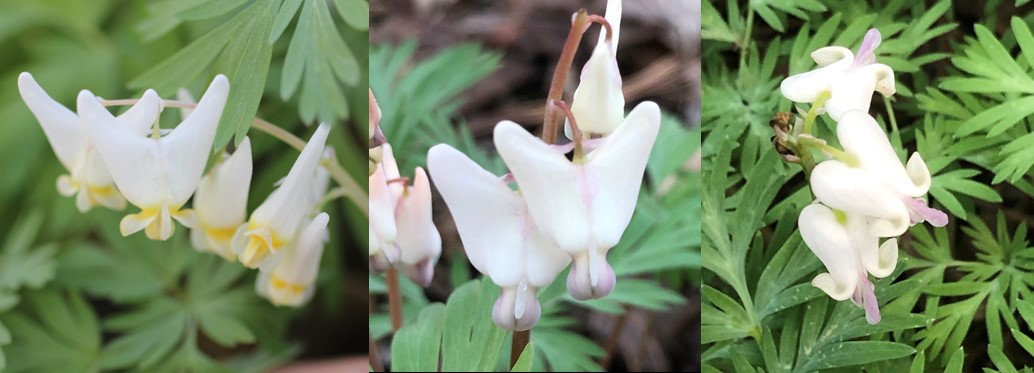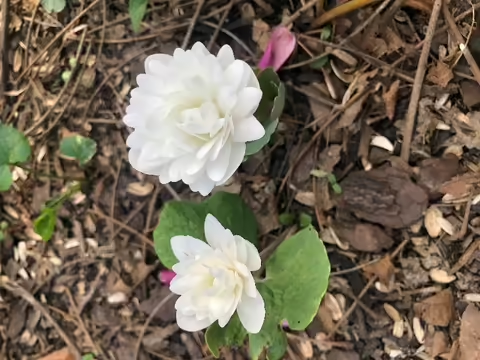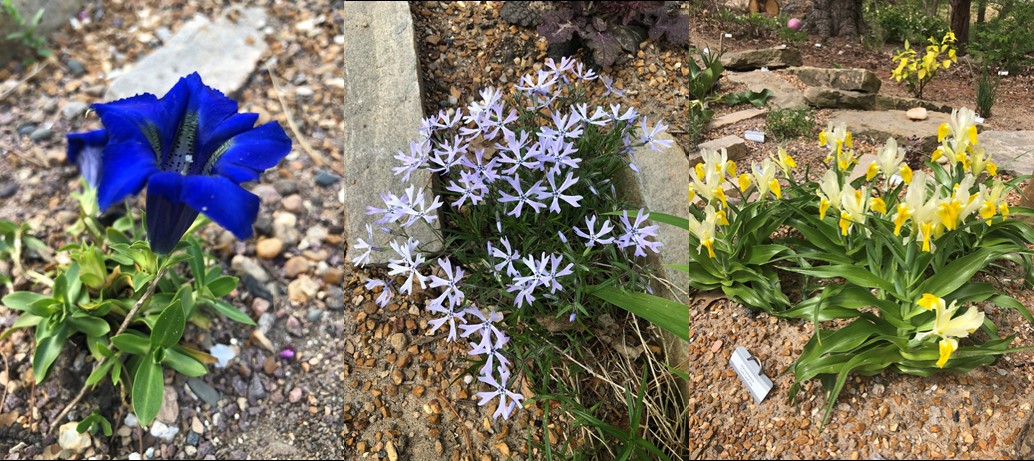It’s not until their dainty little blooms appear that I can more easily differentiate a patch of Dutchman’s breeches (Dicentra cucularia) from a patch of squirrel corn (Dicentra canadensis). The flowers of Dutchman’s breeches are often described as looking like “a pair of white pants hanging by their legs on a clothesline”…but to me, they look like upside down, yellow-waisted M.C Hammer parachute pants. And when the wind makes them dance, even more so. Squirrel corn looks like traditional little white hearts, oftentimes touched by pink. So by color, if you see touches of yellow, it’s almost for sure Dutchman’s breeches. But if you see pink, take a closer look because there is a pink form of Dutchman’s breeches that color-wise, can be similar to squirrel corn. Regardless of color though, the petal spurs of Dutchman’s breeches are tapered and spreading, making them look like pants, whereas on squirrel corn, the petal spurs are rounded and converging, making them look more heart-like. Bloom times for the two usually overlap at least for a short time in my garden, with squirrel corn starting roughly one to two weeks after Dutchman’s breeches. Seed of both can be dispersed by ants (attracted by elaiosomes), so if you get a patch established, don’t be surprised if other patches start popping up over the years. One of my newer patches of Dutchman breeches is a rather neat mixture of the standard form (white and yellow) and pink form plants. Go ants!
Another plant I wish the ants could spread around are my double-flowered bloodroot (Sanginaria canadensis f. multiplex), but alas, like many double-flowered specimens, they are sterile and don’t produce seed to help spread them around. If I want more, I will need to divide the rhizomes in the spring or fall. Site conditions are the same, but the double flowered form runs about three weeks later than the standard single bloom type in my garden. Like miniature water lilies!
It’s always rough when you just don’t have the right conditions to grow certain coveted plants; in my case, plants that require sharp (very fast) drainage. Thus the creation of my small crevice garden two years ago for plants I don’t feel I can live without, but won’t otherwise appreciate my clay soil and slow drainage. Like any new endeavor I’ve had my share of failures getting started, but I’ve had enough success so far to expand my garden just a bit each year. Last fall I added trumpet gentian (Gentiana acaulis hybrid ‘Holzmann’), sand phlox (Phlox bifida) and corn leaf iris (Iris bucharica) and all made it through their first winter and have bloomed beautifully this spring. If they come back next year after surviving a St. Louis summer and another winter, I’ll consider them successfully established. Already planning on what to add next.


